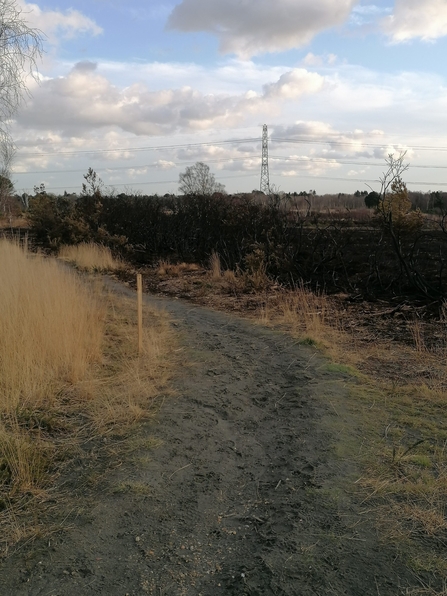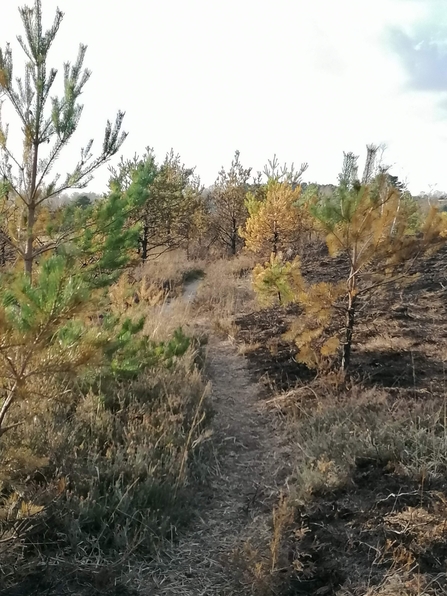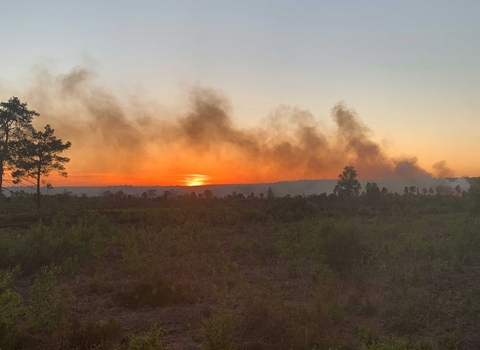We have seen lots of news reports about wildfires recently, with catastrophic scenes from many countries including Greece, California and Australia. Maps in the UN report Spreading Like Wildfire show that the area of land burned by wildfire has increased in parts of the UK in recent years. Surrey Fire and Rescue Service focus their wildfire response readiness on the period from April to September each year, but report that the start of the wildfire season is moving into March.
Chobham Common has experienced wildfires in April 2017, March 2019, August 2020, and January 2022, having previously been free of major fire damage for over 5 years. There were several other wildfires on Surrey’s heathlands during 2020, including one on Brentmoor Heath in May. So far 2022 has also seen huge fires on Ash Ranges in April and Pirbright Ranges in July.




